There are two types of people in this world: those who love snakes and those who are terrified of them. There’s no in-between. While their likability may be up for grabs, there’s no denying that snakes are unbelievably cool creatures. Think about it — they have no limbs, yet they’re one of the most deadly animals in the world. That’s impressive.
Some snakes can fly (oh yes), while others can swim long distances. If you want to learn more about these slithery reptiles, here are 50 fascinating facts about snakes that will make you love them.
Snakes live on every continent except Antartica.

Getty Images
You’ll find snakes in environments across planet Earth, except Antarctica, Ireland, Iceland, Greenland and New Zealand. They can be found in deserts, swamps, rain forests, lakes, ranches, beaches, but not snowy mountain tops or icy glaciers.
They don’t like the cold. Why? Because…
Snakes are cold-blooded reptiles.

Getty Images
That means they can’t regulate their body temperature like their warm-blooded animal friends. When it’s cold outside, snakes stay cold, too.
They can’t use energy to create heat. Snakes hibernate in tunnels or *gulp* inside your toasty house when the temperature drops.
Snakes hide to keep warm.
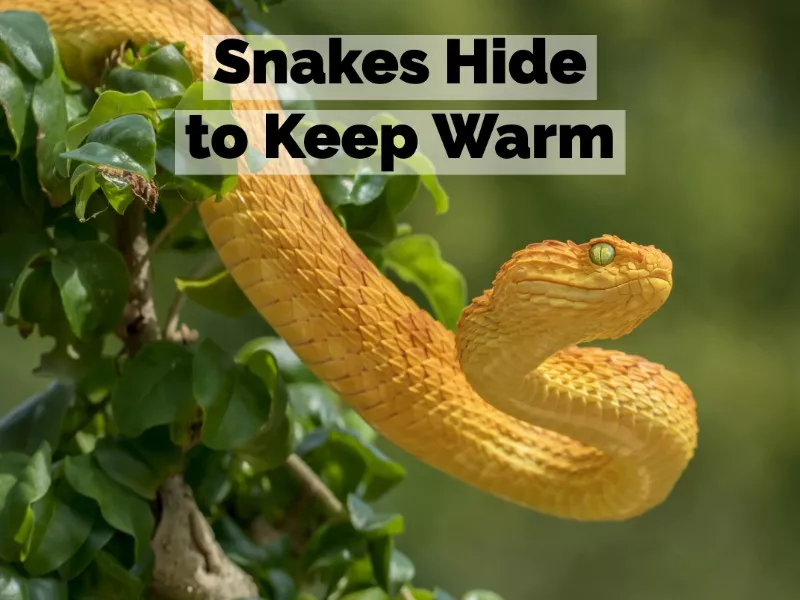
Getty Images
Snakes are great at playing hide and seek. They like to hide under rocks, under sheds, under bushes or shrubs, in sidewalk cracks or tall grass.
Snakes are attracted to the warm moisture and food sources from these hiding places. So, don’t be alarmed if you’re gardening and find a harmless garter snake burrowing in the rocks and soil.
Snakes are carnivores.

Getty Images
These slithery reptiles love to eat meat, including rodents, birds, rabbits, frogs, insects, worms, eggs, slugs and — if you’re a King Cobra — other snakes. Some species, such as the Eastern Indigo Snake, aren’t picky eaters. They’ll inhale anything — we’re talkin’ venomous snakes, turtle eggs, fish and invertebrates. Other snake species are conscious about their diet and only feast on eggs.
If you’re feeding a pet snake, they’ll happily eat frozen and thawed mice, rats, gerbils and hamsters.
Snakes don’t need to eat too often.
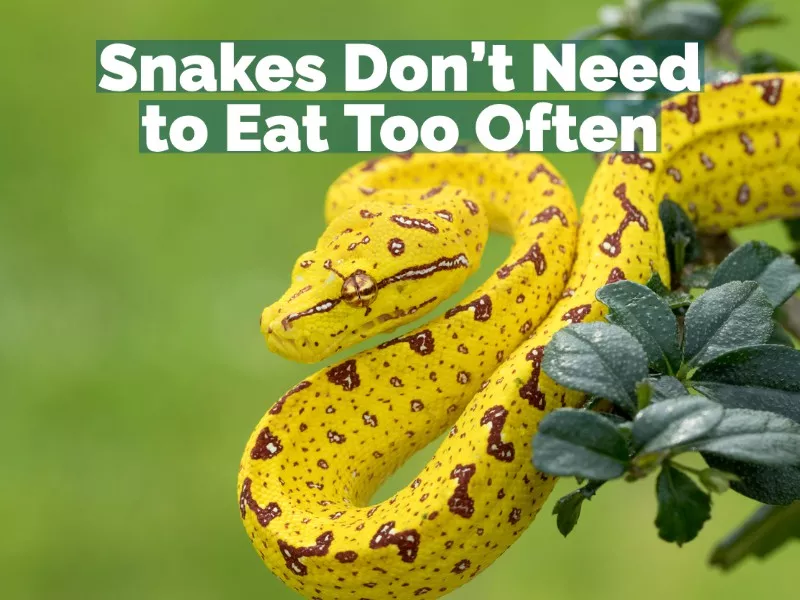
Snakes have a very slow metabolism rate, which means they don’t need to eat daily. In fact, anorexia is quite common in snakes. King Cobras, for instance, can go months without food! Snakes in temperate climates eat less as the light cycles decrease. When the days are longer during summer months, they will get their appetites back.
A mature pet snake typically eats once a week, while a younger one will eat about twice a week.
Snakes can eat other animals that are way bigger than them.
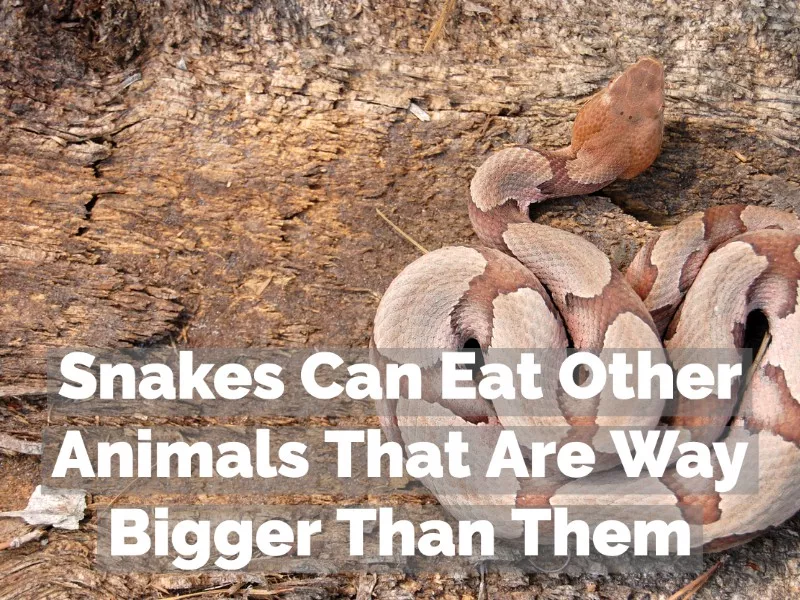
Portion control isn’t something snakes think about when it’s time to eat. They can eat other animals that are up to 100 percent bigger than their size. Some snakes have made headlines for eating crocodiles and even cows!
How do they fit these large animals in their mouth? Well…
Snakes can open their mouths 150-degrees wide.
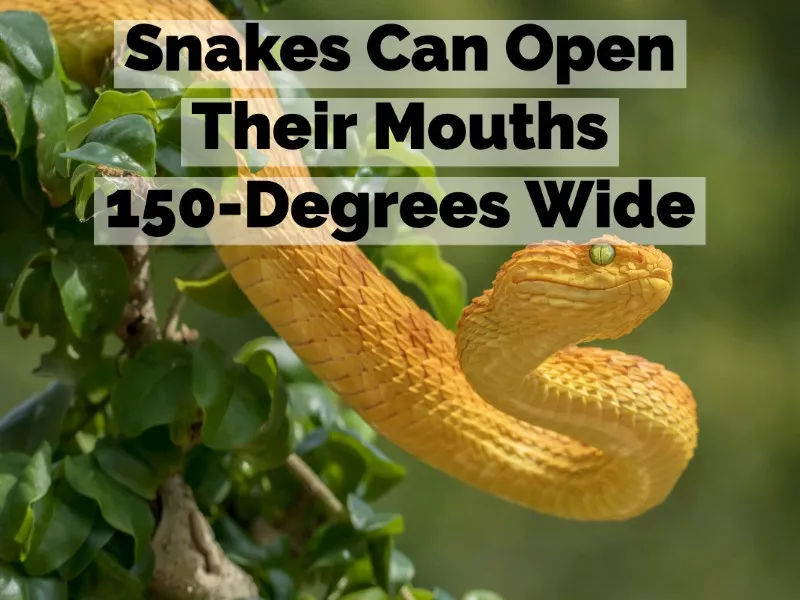
Snakes can swallow large animals because they can open their mouth to four times the girth of their body. That’s because their jaw isn’t attached to its skull but rather to ligaments.
Snakes go for it when attempting to eat larger prey. Case in point: A Burmese Python in Florida attempted to swallow a deer in 2018 — not an image for the faint of heart!
Snakes swallows their prey whole.

Snakes are terrible dinner guests because they don’t chew their food and instead swallow it whole. Their teeth are used to grabbing and holding prey because, well, snakes don’t have hands or claws.
A snake’s jaw and upper body have powerful tendons, muscles, and ligaments that essentially make it double-jointed — allowing it to open its mouth wide enough to swallow prey. It can take anywhere from four to five days for a snake to digest its food because the bones take time to dissolve in stomach acid.
Some snake species use their body to hold prey.
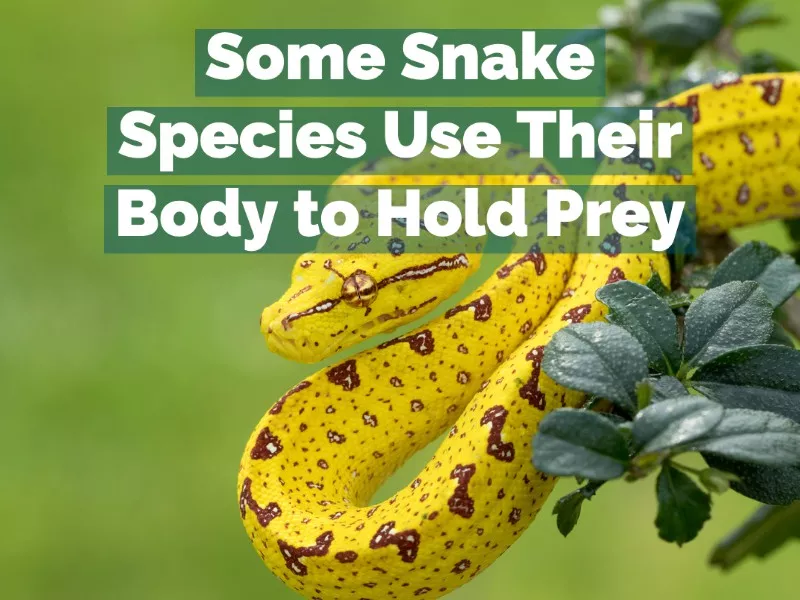
Pythons and boas are strong and powerful snake species. They use their muscular bodies to wrap around their prey, slowly constricting until their victim is squeezed to death. Then, they swallow it whole.
You’ll find boas in swamps, marshes, trees and streams of North, Central and South America. Pythons hang out in the rainforests of Asia, Africa and Australia.
Some venomous species paralyze their prey before swallowing it.
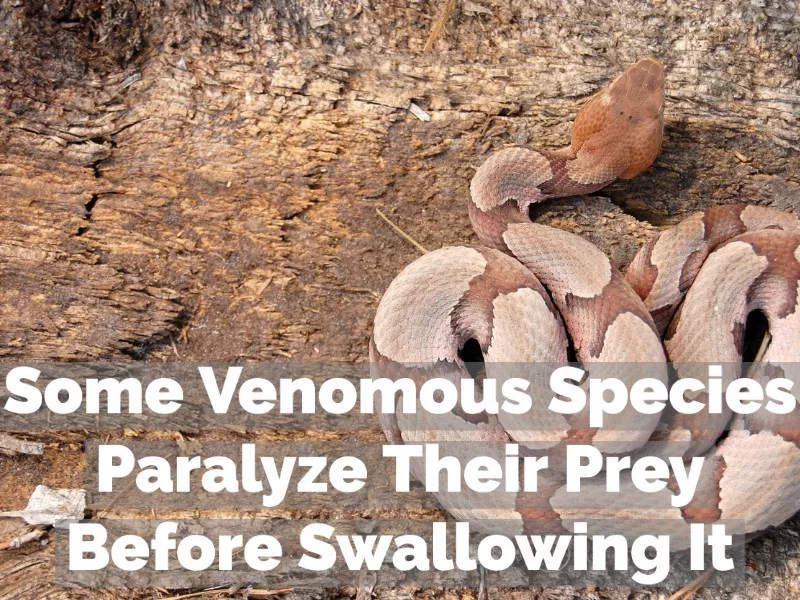
Cobras, vipers, rattlesnakes and other venomous snakes are ruthless when they’re hungry.
These snake species paralyze their prey by sinking their fangs into their dinner and injecting a lethal venom before swallowing them.
Snakes may explode after eating an extra-large animal.
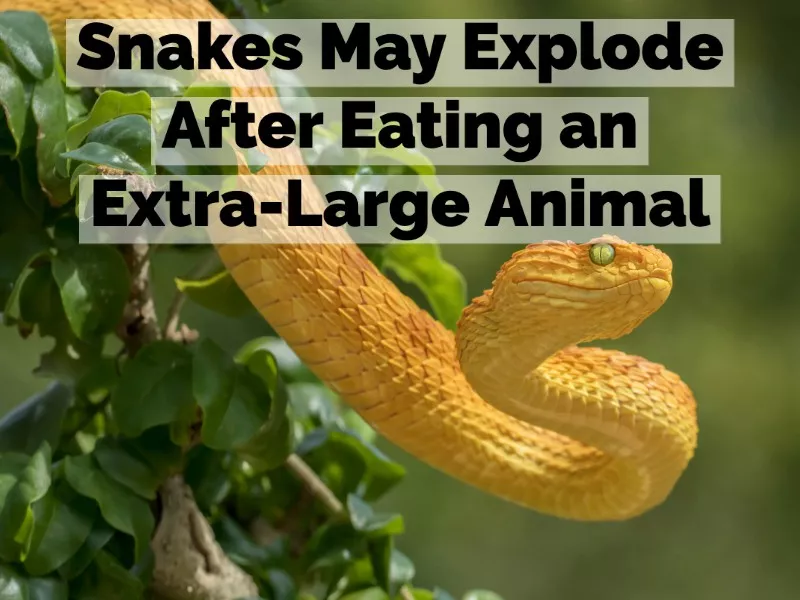
Have you ever felt so full that you may explode? Well, on very rare occasions, snakes have been known to burst (you read that right) after attempting to eat extra-large prey.
At least, that was the case for a 13-foot Burmese Python that tried to gobble down a 6-foot alligator in Florida. Both animals were found by rangers in the Everglades with dismantled body parts. That’s wildlife for ya!
Snakes smell with their tongue.

Snakes don’t use their nose to smell the flowers, rather they use a split tongue to smell and taste. They stick out their tongue and flick it up and down to smell their surroundings, which lets them know if danger or food is nearby.
The flicking tongue collects odors that are present in tiny moisture particles floating through the air. Then, the tongue retracts into the vomeronasal organ to send messages to their brain about what’s around them.
Snakes don’t have eyelinds.

So, they can’t blink! Snakes have poor eyesight. They’re able to see shapes, but they can’t make out details of their surroundings. This is attributed to their evolutionary history as burrowers living in dark spaces. But all snakes aren’t created equal — Pit Vipers use pits on the side of their head to sense heat, which is basically like using night vision goggles.
The Coachwhip Snake is an unusual exception. When they feel threatened, they constrict and expand blood vessels around their eyes to enhance their vision.
Snakes also don’t have ears.
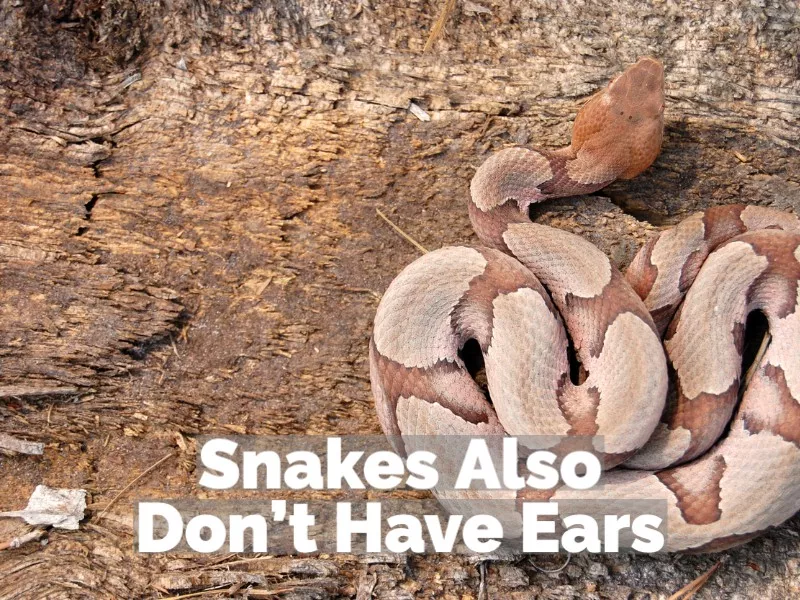
Snakes may not have ears, but they don’t like loud noises. Confused? While snakes don’t have external ears, they have inner ear structures and bones in their jaws that respond to vibrations.
When there’s a noise like footsteps crunching on the mulch, signals are sent to the brain, and it’s interpreted as sound. So, if there’s a loud bang, snakes can hear that through vibrations.
Snakes hiss as a warning to leave them alone.

Some animals, like birds, have a variety of sounds they can produce. But a hiss is the only sound a snake can make. Try to make a hissing sound. Did you use your tongue? When a snake hisses, air passes through the mouth and nose.
However, it doesn’t use its forked tongue to make the sound! The hiss is basically like giving a heavy sigh (a warning for other animals to leave them alone!).
Snakes may look shiny, but they aren’t slimy.

Snakes have very smooth scales with a slightly rough texture, which, like other reptiles, are not slimy.
Amphibians, such as salamanders, toads and newts, are the ones that need to keep their skin moist and wet.
Snake scales have many purposes.

Snakes’ scales may not be slimy, but they do have several purposes that help them function, especially in hot or arid climates. Scales trap moisture, reduce friction, protect from hot or rough surfaces and allow snakes to grip tree branches.
There are several snake species, such as pythons, that are scaleless. These baldies usually have exotic or colorful patterns and make for great pets.
Snakes shed their skin once a month.

Molting, or ecdysis, is the process in which an animal sheds its skin. It happens when their skin gets old and they outgrow it.
Snakes shed their skin about once a month to continue growing, plus it helps get rid of parasites. They’ll rub against a tree branch and easily slide out of their skin.
Most snakes lay eggs.
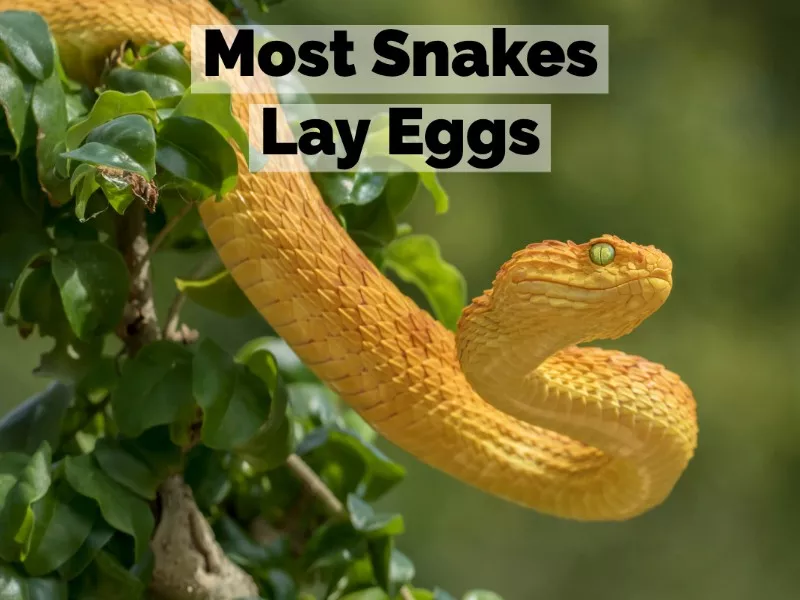
Snakes that lay eggs are oviparous. But, unlike birds, they’re not as motherly or welcoming. Female snakes usually deposit a clutch into a damp and dark place. Some species immediately abandon their eggs to continue living life without children.
When the young snake is ready to hatch, it uses a sharp cutting structure on its upper lip called an egg tooth to break free from the eggshell. It loses its baby tooth and slithers into the real world after hatching.
King cobras make a nest for their young.

While several snake species abandon their eggs after giving birth, King Cobras make a cozy nest for their young and stay with their eggs.
This period of keeping their eggs warm and safe is called “brooding.” After they hatch, though, the babies are on their own.
Other snakes give birth to live young.

It’s weird to picture (maybe don’t), but about 30 percent of snakes give birth to live young. That’s because they live in climates that are too cold for eggs to develop and hatch.
When a live-snake birth happens, the young are usually covered in a thin membrane, and they use their egg tooth to break free. Rattlesnakes, boas and garter snakes are among the species that give birth to live young.
Not all snakes are venomous.

You may have learned the difference between venomous and nonvenomous snakes in Wilderness 101, but if not, here’s a refresher about its coloring:
“If red touches yellow, it will kill a fellow.
If red touches black, it’s a friend of Jack.”
If you’re confronted with a snake and forget the rhyme, look into their eyes. Nonvenomous snakes have round pupils, while venomous ones have diamond-shaped pupils.
There are more than 3,000 species of snakes.
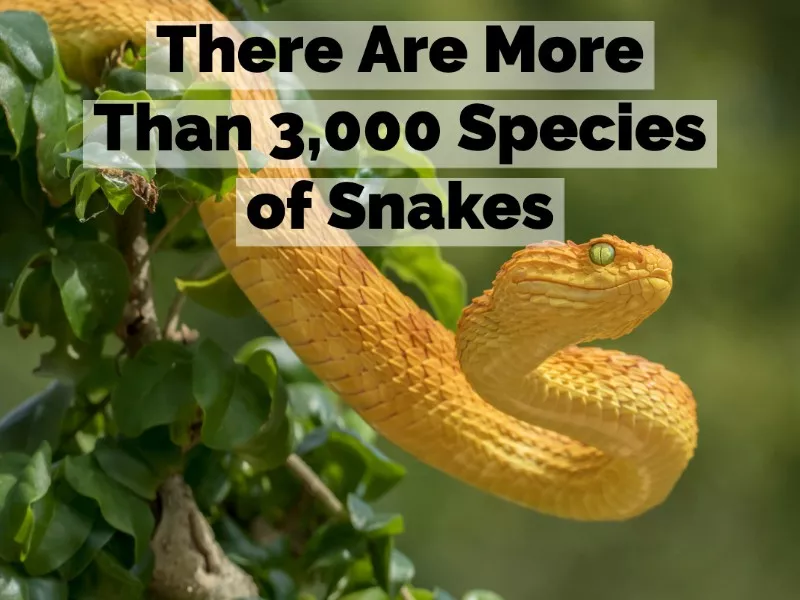
It’s hard to pick a favorite kind of snake when there are 3,000 species across the planet.
Snakes are vertebrates belonging to the phylum Chordata. Then, they’re grouped into suborder Serpentes.
About 600 species of snake are venomous.
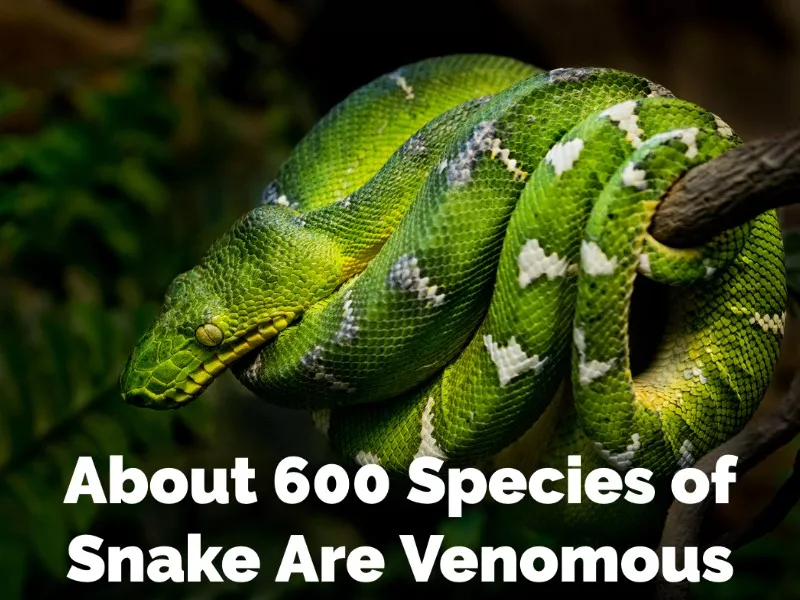
Snakes produce venom to capture and kill prey. They sink their hollow fangs into the skin and use muscles to force venom from its glands into the victim’s body.
About 200 out of the 600 venomous species are capable of killing or significantly hurting a human. Among those, venomous and deadly snakes include rattlesnakes, copperheads, water moccasins and coral snakes.
The most deadly snakes are found in Australia.
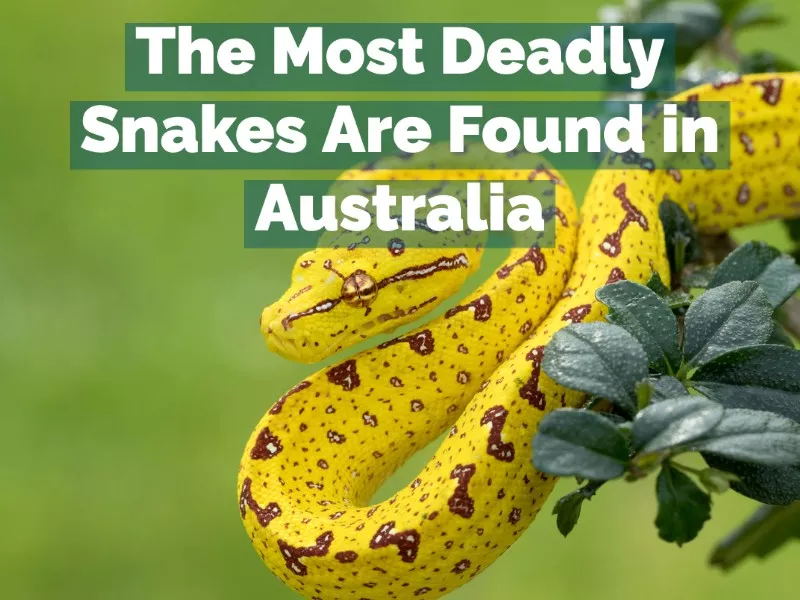
Deadly wildlife is synonymous with Australia. Sharks, jellyfish, spiders, octopus and snakes lurk around the continent. Australia has about 170 snake species — and 100 of them are venomous.
Brown snakes, red-bellied black snakes, copperheads, death adders, taipans and tiger snakes are among some of the most snakes you’ll find in Australia. For perspective, the Inland Taipan has enough venom in one bite to kill more than 100 adult men!
About 60 species of snakes live in the Indian and Pacific Oceans.
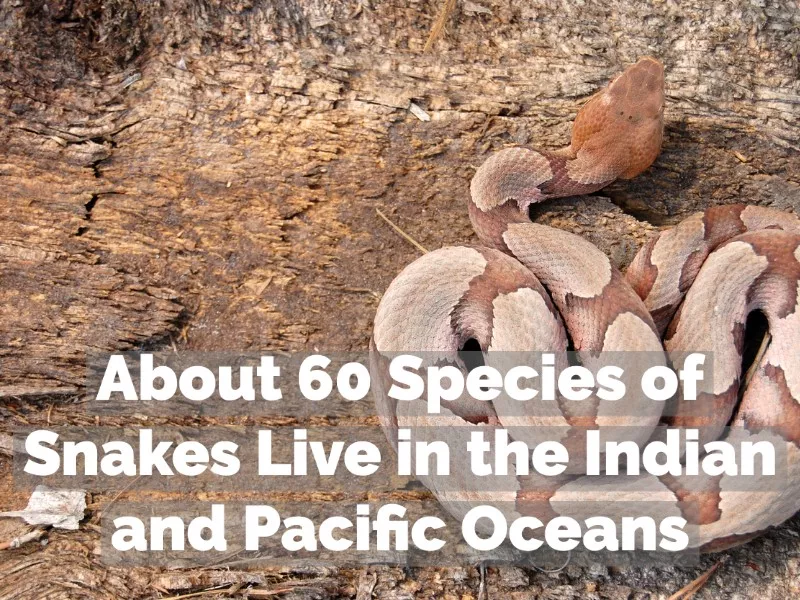
Not all snakes live on land; some like to call the ocean home. Sea snakes and their cousins, kraits, are some of the most venomous snake species on the planet! They have a super potent venom that can kill, but they’re not a big threat to humans. Sea snakes are not aggressive, plus their fangs are too small to do much damage.
Most sea snakes stay within 100 feet of the surface as they feed on coral reefs and the seafloor. They like to eat fish and eels of various sizes. The Yellow-Bellied Sea Snake is an impressive little fellow that’s known for swimming long distances across the Indian and Pacific oceans.
The world’s smallest snake is 10 centimeters long.

The world’s smallest snake is an absurd little creature called the Barbados Threadsnake. Not to be confused with a worm, this little guy can curl up to the size of a quarter. Its mouth opens just wide enough to fit a small insect, which is usually dinner.
The Barbados Threadsnake is more susceptible to losing moisture, so they like to burrow. You’ll find the hiding in the soil.
The largest snake is 29 feet long.

The Green Anaconda is the largest snake in the world. Growing 29-feet long and weighing up to 550 pounds. For reference, that’s about the size of a school bus. Females grow larger than males.
Green Anacondas like to feast on pigs, deer, caimans and turtles. They don’t bite, but they will kill by suffocation. You’ll find these guys hanging out in the rainforests of South America.
The reticulated python is the longest snake in the world.

Anacondas may be the largest snake, according to combined weight and length, but the Reticulated Python can grow over 25 feet in length. The longest python on record measured 32 feet long!
This species lives in Southeast Asia. Unlike anacondas, Reticulated Pythons bite! Yet they’re popular pets for snake owners.
Most snakes have one lung.

Snakes evolved over the years to function with one lung, which makes sense considering their slender body.
But pythons are considered “primitive” snakes because they have two lungs — which may give them a louder hiss!
Not all brown snakes are brown.

Brown snakes are a venomous species in Australia, and not all of them look the same. Some can be orange or black, while others are striped or solid. A common defining feature is a pronounced brow ridge.
It’s worth noting that brown snake bites cause the most fatalities in Australia.
Some sea snakes can breathes using their head.

Hold up, what? Yeah! Sea snakes can stay underwater for long periods because their head acts as a gill.
Researchers found a complex system of blood vessels just beneath the skin of the forehead that allows for long swims underwater. That’s an interesting evolutionary feature!
The fear of snakes is called ophidiophobia.
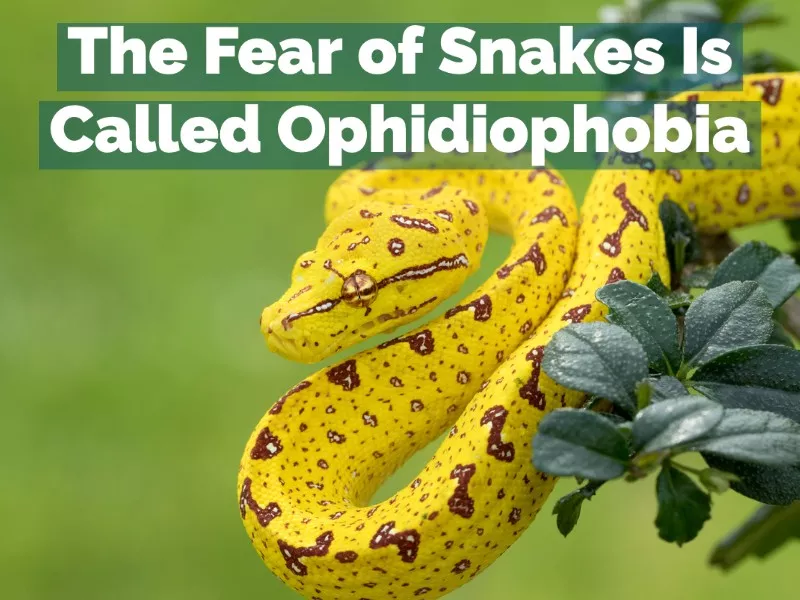
There are enough people in the world who are terrified of snakes that it’s a medical phobia. Ophidiophobia is a deep fear of snakes causing one to experience dizziness, nausea, sweating, trembling or increased heart rate at the mere mention of snakes.
This is usually the result of learned behavior, negative experience or portrayal in the media.
The flowerpot snake doesn’t need a partner to produce.

Not entirely an immaculate conception, but close, female Brahminy Blind Snakes (aka Flowerpot Snakes) can reproduce by parthenogenesis. That means their eggs don’t need sperm fertilization. Instead, eggs are self-fertilized and cell division happens during ovulation.
What’s with the nickname? These harmless little guys can be found burrowing in the soil of your garden … mostly likely, in a flowerpot!
Some snakes can fly.
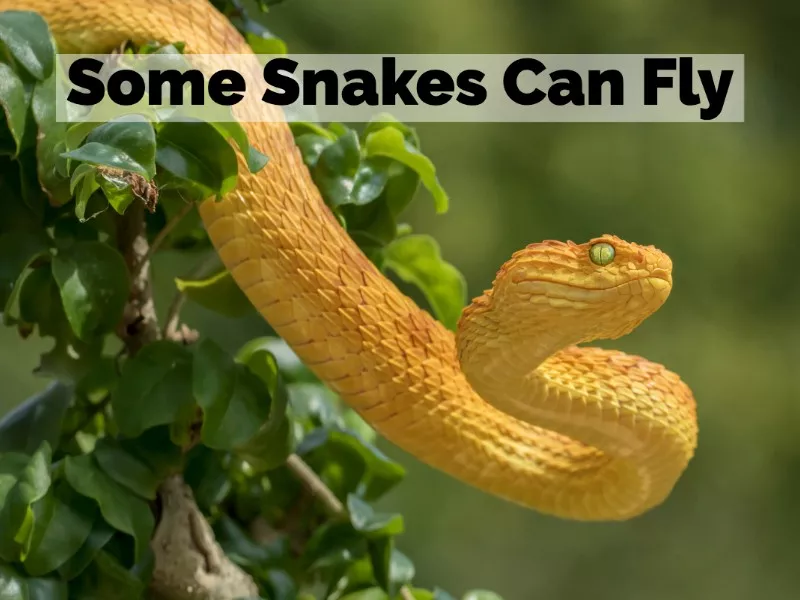
It’s a bird, it’s a plane, it’s … a snake! Did you know that some snakes can fly? They really are an animal of many talents.
OK, it’s more like gliding because they flatten their body and do wavelike movements in the air. This was discovered in the Paradise Tree Snake of Southeast Asia. They simply jump from a tree and smoothly glide toward the ground.
Snakes sleep with their eyes open.
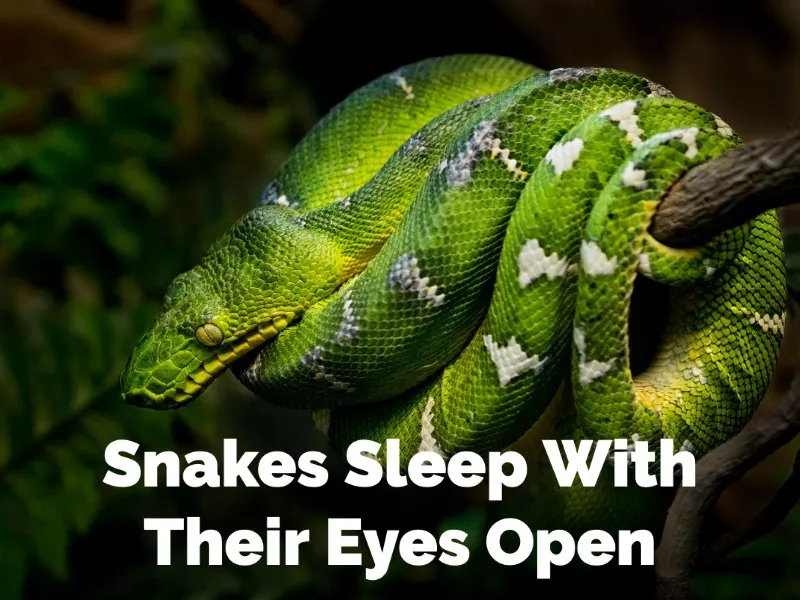
That’s … not creepy at all. But if you recall, snakes don’t have eyelids! So, they can never blink or close their eyes.
So, if you think a snake is glaring at you, he may just be sleeping. But you’ll never know!
King cobras are the most intelligent snakes.
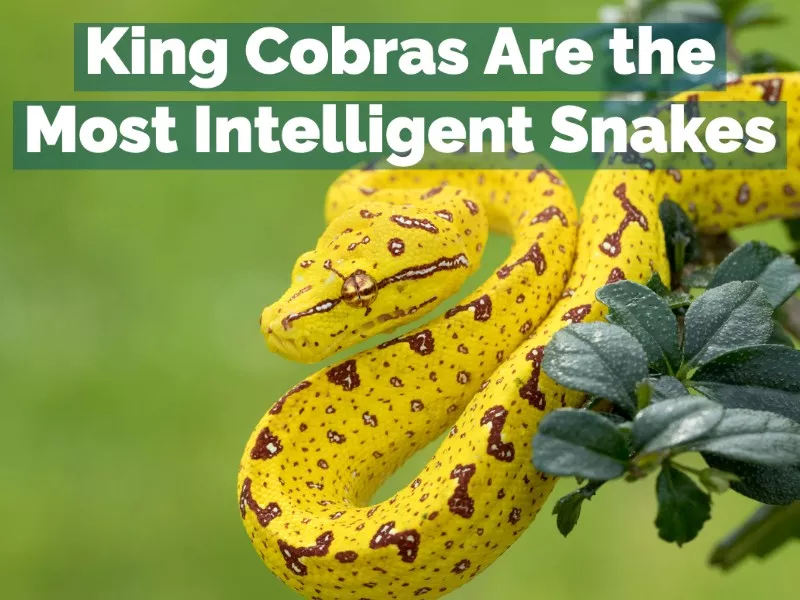
It’s not a totally subjective statement because King Cobras have intelligent characteristics that are not seen in other snakes. King Cobras are territorial — males can recognize the boundaries of their territory, while females build nests for their eggs.
As a bonus, a King Cobra in captivity can recognize its handler from other people.
The black mamba is the fastest snake in the world.

And, some may say, this is the deadliest snake in the world. Black Mambas can slither in short bursts to speeds of 12 mph when they’re challenged.
That’s pretty quick for an animal without limbs!
Black mambas tie other in knots when fighting.

Watching Black Mambas fight can be confusing. Two male snakes undergo a “plaiting combat” in which they tie around each other in a way that can be mistaken for mating. The fighters swing their heads at each other until one gives up.
The prize? A pretty lady Black Mamba.
The largest, longest and heaviest snake lived 50 million years ago.

A monster called The Titanoboa takes the record for the largest, longest and heaviest snake discovered. Fossils of this snake were found in Colombia. Evidence shows that he weighed over one ton and grew to 40-feet long!
Researchers suggest that he looked like a modern-day boa constrictor but behaved like today’s water-dwelling anaconda, according to Smithsonian Magazine.
There has never been a snake in Ireland.
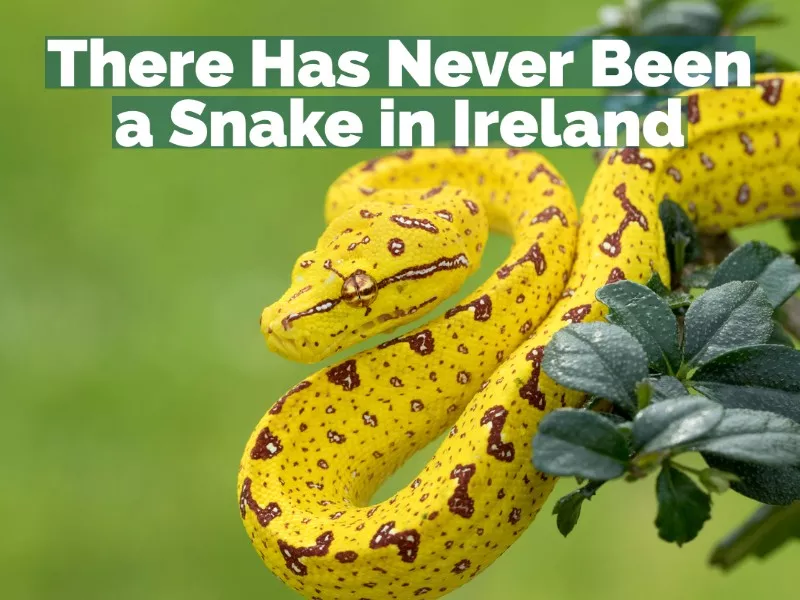
There’s an old legend that St. Patrick eradicated all of the snakes from Ireland because serpents were symbols of evil in Judeo-Christian beliefs (for example, the hissing snake who tempted Adam and Eve.)
But climate may have been the reason.
A python’s heart gets bigger during dinner time.
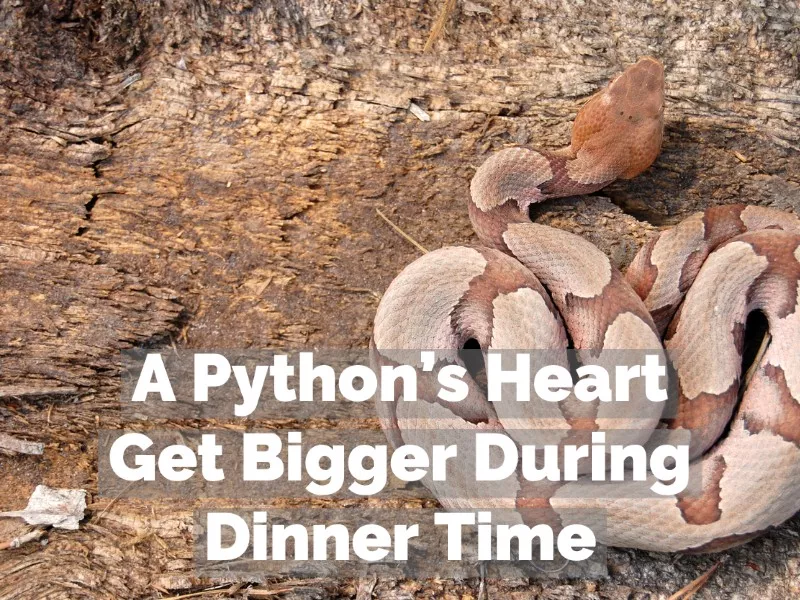
When it’s time to eat, the Burmese python’s heart swells to a larger size.
A study of recently fed snakes suggests that a mixture of fatty acids in the blood drives this cardiac growth, but it may only happen during certain conditions.
Anacondas can hold their breath underwater.
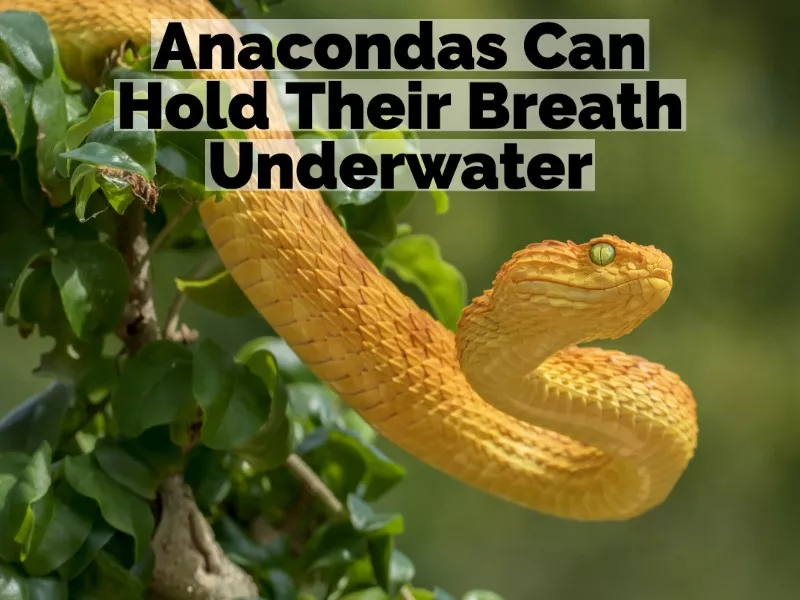
Anacondas are savvy swimmers, and you won’t want to challenge them to an underwater breath-holding competition.
They can stay submerged for up to 10 minutes.
The venom of a king cobra has the ability to kill an elephant.
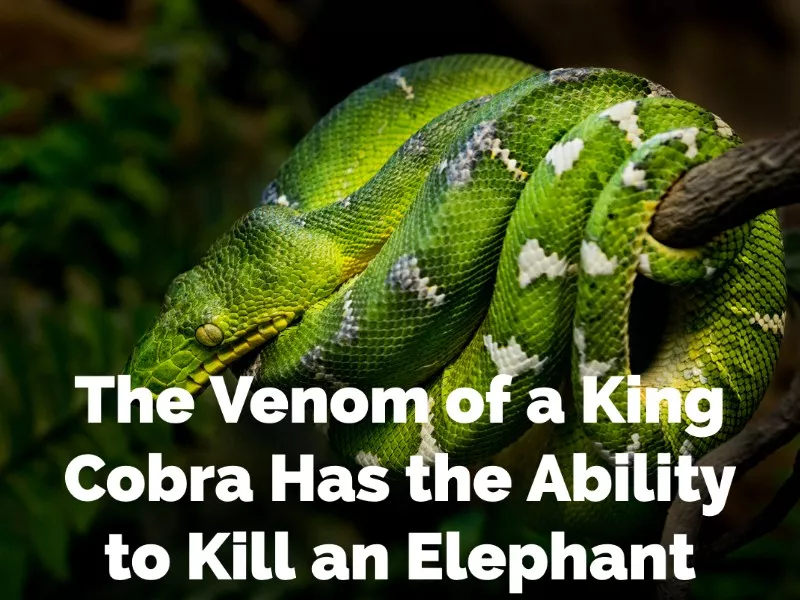
King Cobras are the largest venomous snake in the world. Sharp, half-inch fangs pack a hefty punch with up to 7 millimeters of venom.
A King Cobra bite can kill a human in 15 minutes and a full-grown elephant in a few hours, according to the New York Times.
Snakes have different shaped heads.
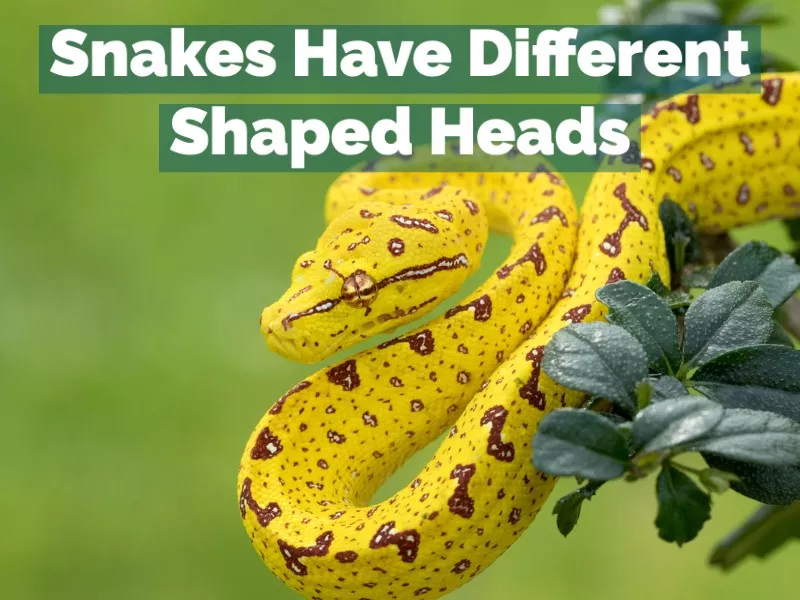
The shape of a snake’s head is another way to determine if it’s venomous.
While nonvenomous snakes have a rounded head, venomous snakes have a more triangular-shaped head.
Harmless snakes can avoid danger by mimicking a venomous snake’s head.
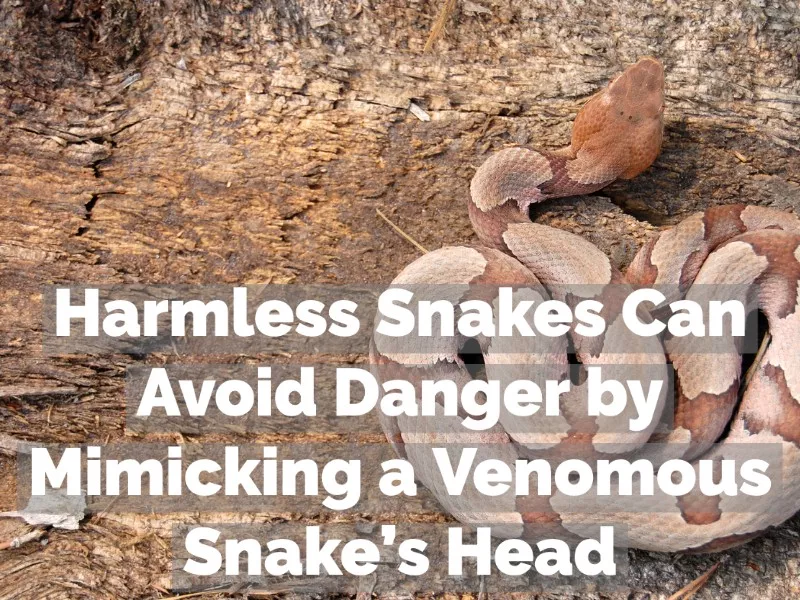
Snakes can be copycats when they sense danger. Some non-venomous snakes can mimic the triangular shape of a venomous snake’s head.
Imagine if you could change the shape of your head!
Snake crawl to move in a straight line.

Usually, snakes slither in an S-shaped manner. Scientists found that for them to move in a straight line, they crawl.
They’ll coordinate their muscle and skin movement in an effort to scoot forward without bending its spine. This is useful when they’re stuck in confined spaces.
You can tell the difference between male and female snakes by looking at their tail.

Male snakes have a thick and long tail.
A female’s tail goes from thick to thin at the tip.
Male snakes have two penises.
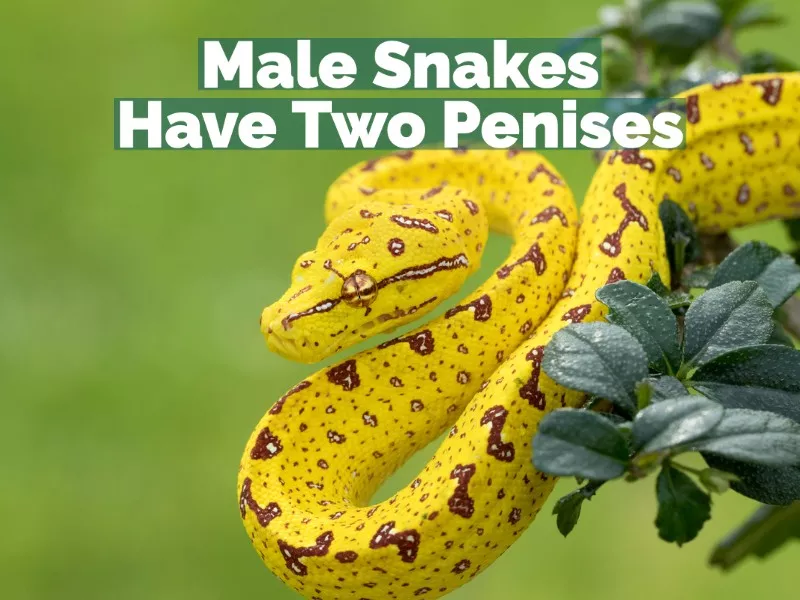
Well, kind of. Male snakes have a pair of tube-shaped sex organs inside their bodies. Females don’t have this hemipenis.
If a pet snake owner can’t tell the sex of their snake from its tail, they can apply a finger below the vent where the hemipenis would come out and it will (for lack of a better word) pop out. It’s not recommended to do this because it can cause a lot of trauma to the pet snake.
The sidewinder rattlesnakes move in a sideways motion.

Sidewinder rattlesnakes are native to hot, arid climates like deserts. They move sideways across the ground in a J-shaped trail.
This unique way of moving prevents overheating on hot surfaces.